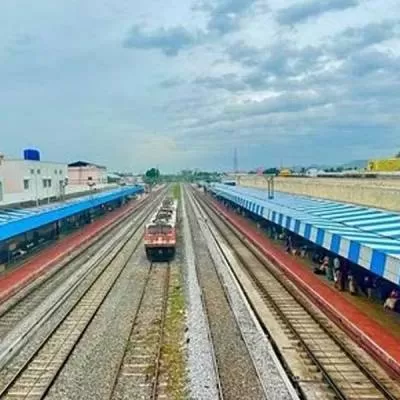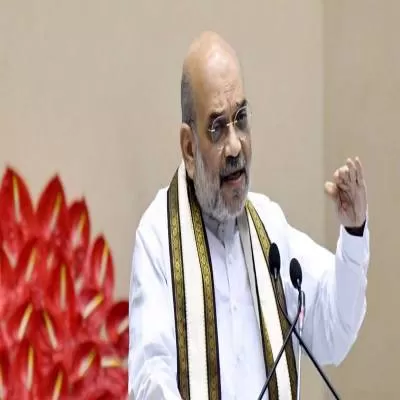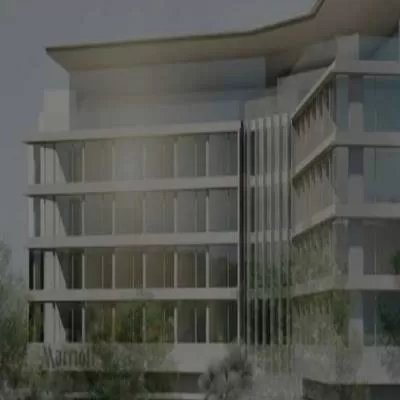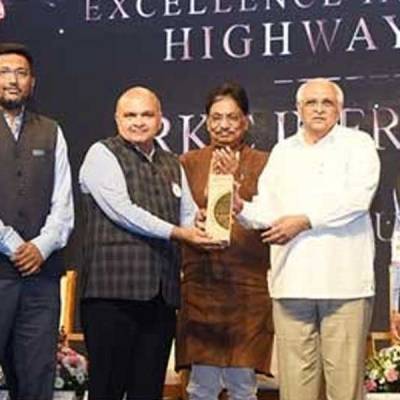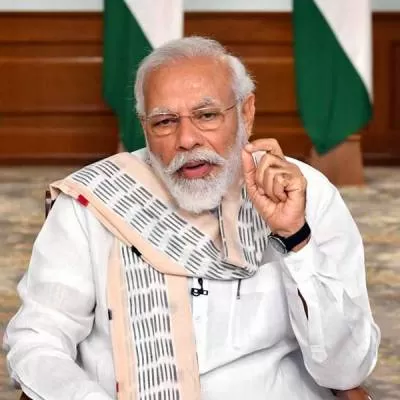- Home
- Infrastructure Urban
- ECONOMY & POLICY
- G-Force!
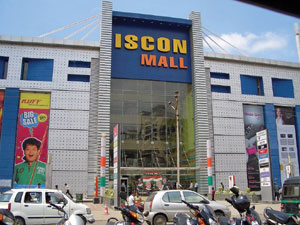
G-Force!
Here's the thing... when players in the infrastructure game speak of G-force, they're not referring to gravity - for them, 'G' stands for Gujarat! Dubbed the 'Growth Engine of India', the state's infrastructure juggernaut, which is now driving economic and industrial growth, continues to thunder on.
Super stats
The statistics say it all. Today, Gujarat enjoys an extensive road and rail network and reliable power supply. The state's per capita power consumption is amongst the highest, at 1,175 units, against India's average of 592 units. It is a leader in harnessing wind energy and has a grid that provides natural gas to many districts. With the country's longest coastline of 1,600 km and 43 ports (one major and 42 minor), the state handles 30 per cent of India's total cargo and 80 per cent of minor port cargo. And, yes, Gujarat has 17 airports, the largest network of airports in the country.
Equally impressive is the list of key infra projects underway and in the pipeline. Notable examples include the Sabarmati Riverfront Development Project; Narmada Canal Network; Ahmedabad-Gandhinagar-Dholera Metro Rail; Bus Rapid Transport System (BRTS) in Ahmedabad, Surat and Vadodara; Regional Rail System (RRS) for Ahmedabad; Light Rail Transit System for Surat; three Greenfield ports - Porbandar, Okha and Bhavnagar; an international airport at Dholera; and the Gujarat International Finance Tec-City (GIFT). In addition, several projects in water supply, water treatment, sewerage, solid- waste management and storm-water drainage, and some flyovers and internal roads are being implemented under the Jawaharlal Nehru National Urban Renewal Mission (JNNURM) and other schemes. There's more! Upcoming infrastructure on the Delhi- Mumbai Industrial Corridor (DMIC), almost one-third of which passes through Gujarat. In the Dedicated Freight Corridor (DFC) between Mumbai and Delhi, six of the 20 identified industrial nodes across six states are located in Gujarat
The place to be
Not surprisingly, Gujarat is now one of the most attractive investment destinations in the country. In the past decade, Rs 99,800 crore has been invested in infrastructure in the state, of which 49 projects were under public-private partnership (PPP) totalling an investment of Rs 26,670 crore. In fact, a recent study by the Associated Chambers of Commerce and Industry of India (ASSOCHAM) reveals that Gujarat has attracted the highest share - about 12.5 per cent - of total outstanding private-sector (domestic and foreign) investments across India as of June 2012. According to the study, of the total outstanding investments in Gujarat worth over Rs 14.8 lakh crore, the private sector accounted for over Rs 10.3 lakh crore, thereby registering a share of about 70 per cent in the over¡all investments across the state. A key factor here is the biennial Vibrant Gujarat Global Investors Summit (VGGIS), which the state government has been holding since 2003, in its miss¡ion to make Gujarat a global business hub.
The reasons behind this success story are not hard to find. According to Dinesh Patel, President, Confederation of Real Estate Developers' Associations of India (CREDAI) Gujarat, and Member, Governing Council, CREDAI India. "The Gujarat Government's extraordinary achievements in the infrastructure sector are a result of flexible policies, good working systems, efficient administration and optimal usage of ultramodern automation, supported by a positive response from local entrepreneurs."
While the state's innate advantages, like its rich natural resource base, unique heritage of entrepreneurial skills and hardworking skilled manpower, have played a significant role in the development process, the largest share of the credit rests with the Gujarat Government for framing appropriate policies, creating a conducive environment and instituting effective agencies for implementation.
Government initiatives
A major step undertaken by the government was the establishment of the Gujarat Infrastructure Development Board (GIDB) in 1995 and providing it a statutory status with the enactment of the Gujarat Infrastructure Development (GID) Act 1999, which provided a legal framework for PPP projects. Today, GIDB facilitates and monitors infrastructure development, from overall planning and removal of impediments to coordination with various department. GIDB, which undertook a master planning exercise across various infrastructure sectors, has developed an ambitious Blueprint for Infrastructure Gujarat-2020 (BIG 2020), which outlines the government's proposals and plans for infrastructure development.
Some other noteworthy steps taken by the state include the formation of the Gujarat Maritime Board (GMB) in 1982 to administer minor ports; the formulation of a separate port policy in 1995; institution of the Gujarat Port Infrastructure Development Corporation Ltd (GPIDCL) as the investing arm of GMB; and enacting the Special Economic Zone (SEZ) Act in 2004 with flexible labour laws and exit options for investors.
An enabling environment
Moreover, the existence of an enabling environment for business makes Gujarat an even more attractive proposition. This includes tax concessions, attractive incentives, ease of land acquisition, flexible labour laws, a good labour environment and, above all, a responsive bureaucracy.
Speed, transparency and professionalism in bureaucracy and the willingness of the government and administration to involve local people in the development process and provide full support to every necessary effort are the factors that make executing projects in Gujarat attractive," avers Arun Karambelkar, President & Whole Time Director, Hindustan Construction Company (HCC). "Going forward, the government should plan for viable and achievable models for mega projects and engage knowledgeable and experienced programme and engineering consultants to achieve optimal solutions." HCC has executed several projects in Gujarat, including parts of the state highway, the Kalol-Mehsana gas pipeline, the Saurashtra branch canal and a pumped water supply scheme from Kesaria to Sonari. The company is currently implementing a pumped water supply scheme from Dhanki to Maliya, Kutch branch canal and Narmada Bridge.
Local businessmen are equally pleased. "The plus points of Gujarat are its well-developed infrastructure in industrial estates, good connectivity to state and national highways, ports and airports, availability of power, skilled manpower, availability of land and, of course, the government's clear-cut policies and investor-friendly approach," enumerates Nagesh Kudva, Director, Conmat Systems Pvt Ltd, a leading engineering conglomerate in construction equipment and material handling. Conmat has been involved in the development of infra projects like the Sabarmati Riverfront Development, Heera Diamond Park & SEZ, BRTS, and national and state highways.
Asit Patel, Managing Director, Gujarat Apollo Industries Ltd, a leading manufacturer of road construction equipment, echoes the sentiment. "The industrial climate is a major attraction," he emphasises. "Other factors are faster clearances of proposals based on a single-window principle and incentives like tax holidays in specific geographical locations to promote employment." Apollo has provided equipment and technical support to Mundra Port, the Ahmedabad-Vadodara Expressway, national highways passing through Gujarat and major state highways amongst others.
Further, the government has also been open to new concepts and the use of advanced technology and equipment in infrastructure development. "Continuous support and subsidies provided by the government to develop solar and other renewable energy sources, development of ports with modern equipment, the upcoming riverfront project, GIFT City, all reflect its openness to adopting advanced technologies," maintains Patel of CREDAI.
GIFT City
Indeed, GIFT City is on everybody's lips these days. Spread across 886 acre and being developed at a total investment of Rs 78,000 crore (approx), this is intended to be a global financial hub with multi-services SEZ, a dedicated financial centre with IT/ITeS sectors, state-of-the-art infrastructure, and residential and social facilities in the vicinity. The groundwork for the project started in 2011 and it is expected to be complete in 10 to 12 years. GIFT City will have 75 high-rise buildings, including a 400 m building, with multilevel car parking, an exhibition centre, hotel, club, golf course, international and CBSE schools, and a hospital. The first-of-its-kind in scale, scope and quality, it will have a district cooling system, introduced for commercial use in India for the first time, which will reduce energy, noise, vibration and maintenance costs, and improve air quality. Another unique feature is an automated water collection system that will maximise resource recovery and minimise impact on the environment, human intervention, requirement of space and health hazards.
"Benchmarked to international financial centres, the project will be a hub for financial services, IT/ITeS and other multi-services sectors, offering a unique opportunity to international and domestic operations in financial services in close proximity," explains Ramakant Jha, Director-in-Charge, Gujarat International Finance Tec-City Co Ltd (GIFTCL). ôIt has the potential to generate around one million direct and indirect jobs. While integrating the best features, GIFT will also create a high-quality environment with world-class infrastructure, setting standards for a sustainable business environment, and serve as a vibrant hub for Western India. Today, an Indian can spend up to Rs 2 lakh annually on a foreign stock exchange or currency market. These investors need not go to London or New York as the foreign exchanges can have their offices right here in GIFT." The first phase of the development is underway covering commercial, residential and social facilities along with infrastructure.
Of course, developing GIFT has its own challenges, more so as infra projects require a longer period of time to break even. "During the initial years, investment in infrastructure may not get the desired results in terms of bringing occupants to the centre," acknowledges Jha. It requires upfront investment and higher initial capital. It also requires proactive government support to align agencies to work in co-ordination with each other. However, these challenges will provide great opportunities later in terms of getting quality clients as they will appreciate the high standards and levels of service. As GIFT is a Greenfield project, achieving threshold critical mass, which will self-propel the centre, is also going to be a challenge."
Sabarmati Riverfront
Equally challenging has been the development of Sabarmati Riverfront, yet another first for India, being executed by Ahmedabad Municipal Corporation (AMC) through a special purpose vehicle (SPV), the Sabarmati Riverfront Development Corporation. The highlights of the project include a clean-up of the polluted river; land reclamation to create a public riverfront on both banks; protection of neighbouring low-lying areas from flooding; and development of a two-level promenade on both sides of the river with parks, gardens, facilities for cultural, educational, sports and recreational activities, and a few areas for commercial and retail development.
"As this is the first project of its kind, we had to undertake detailed hydraulic and hydrology study through the Indian Institute of Technology - Roorkee and National Institute of Hydrology, Roorkee," reveals Dr Guruprasad Mohapatra, Commissioner, Ahmedabad Municipal Corporation. "The project has been designed considering the peak flood observed in the years 1925 and 1973 in the past 100 years. We also conducted a model study through two 500 m pilot projects with different designs. It is a self-financing project with the costs of development to be met from the sale of part of the reclaimed land (maximum 4.5 per cent). But till then, funds had to be raised by AMC through loans from HUDCO."
There were several other challenges too, like planning the development within the river land to avoid land acquisition, reducing the risk of erosion and flooding in flood-prone neighbourhoods, cleaning up the polluted river, rehabilitation and relocation of 8,415 project-affected families, development of an organised riverfront market and laundry campus for unorganised Gujari Bazaar vendors and dhobis who were using the riverbanks for washing clothes, and handling related litigation.
"By maintaining a uniform width of the river, we have ensured that even after constricting the river, the flood level will not rise," explains Dr Mohapatra. "With this, we have also created surplus land for further development and to recover the cost of the project. We have built diaphragm walls and retaining walls to protect low-lying areas from flooding and are diverting the sewage being discharged into the river through an exclusive network.ö The issue of rehabilitation of affected families has also been resolved amicably under High Court directions. Of the 10,043 eligible families to be shifted, 8,415 have been moved to date. Document verification is on for the remianing 1,628 families.
DMIC prospects
Another focus area is DMIC. Leveraging its potential to the state's advantage, BIG 2020 presents a comprehensive approach to providing high-quality infrastructure and connectivity to the special investment regions (SIRs), industrial areas and SEZs that will be set up in the DMIC area. This includes high-quality road, rail and air linkages from the growth centres to the ports and DFC. In fact, 38 per cent of the DFC areas pass through Gujarat. Of the total 530,000 sq km falling under the DMIC region, 22.15 per cent lies in Gujarat according to the prospective plan. The 20 districts falling in the DMIC region are Banas Kantha, Patan, Mahesana, Sabar-Kantha, Gandhinagar, Ahmedabad, Surendranagar, Amreli, Bhavnagar, Anand, Kheda, Panch Mahals, Dohad, Vadodara, Narmada, Bharuch, Surat, The Dangs, Navsari and Valsad. The Delhi Mumbai Industrial Corridor Development Corporation Ltd (DMICDC) is currently working on the Ahmedabad-Dholera Investment Region (Dholera Special Investment Region) for which the master planning is complete. ôIt is envisaged that the Government of India will provide Rs 3,000 crore for the development of trunk and non-PPPable infrastructure to enable the new city to take off,ö reveals Amitabh Kant, Chief Executive Officer & Managing Director, DMICDC. ôThe state government is already working on the Dholera-Ahmadabad connectivity through an eight-lane road. The due diligence on RTS/RRTS connectivity is underway. DMICDC along with the Railways has completed the technical study to bring Dholera on the Indian Railways map. This connectivity will serve not only the passenger but the freight traffic at Dholera Special Investment Region."
This region has been designated a 'National Manufacturing and Investment Zone' and is expected to attract global players. For the effective implementation of DMIC, a SPV between Central and state governments will be incorporated. DMICDC is obtaining environment clearance for the entire project site and has already started working according to the terms of reference prepared by the Ministry of Environment and Forests (MoEF) for the DMIC project. "The state government is very proactive and is providing all the support for an expeditious implementation of the project," adds Kant. "The planned infrastructure with policy support will boost industrial investment, leading to the state's economic growth."
The land for the project is being acquired through Gujarat's innovative 'town planning' (TP) scheme. This unique and highly successful scheme used in many projects by the government is based on land pooling and carried out under the provisions of the Gujarat Town Planning and Urban Development Act (GTPUDA). Under this scheme, parcels of land to be acquired for a public purpose are carved out from a pool of land. An area is marked out for preparing the TP scheme. An equal proportion of land is deducted from each plot of land for creating roads, open spaces and plots for public purposes. The remaining land is then reallocated proportionally to the original plot owners in the form of 'final plots' ensuring that all final plots have a proper shape, access from a proper road and are located with similar advantages as the original plot. In a properly structured tabular format, the value of each property is assessed and the amount due to the owner for the land deducted is estimated. This is adjusted against a portion of the estimated value gain from the implementation of the TP scheme. The entire planning and implementation of the scheme are carried out in a highly participatory process with the load of development and the gain from development distributed across all lands in the scheme.
Impact on allied industries
"In accordance with good governance, Gujarat government has been introducing several such new schemes and creating new milestones," remarks Patel of CREDAI. "For instance, excellent promotion of tourism has encouraged entrepreneurs to build hotels of international standards across the state. The introduction of policies to grant extra FSI for hospitality buildings has also boosted the growth of the hospitality industry. Improved connectivity and supporting infrastructure have enabled developers to provide affordable housing near industries located in remote areas as well.
The infrastructure boom has had a tremendous impact on the equipment manufacturing industry too. Apart from increasing demand for machinery in general, the emphasis is on sophisticated modern equipment. "Rapid construction and infrastructure development has accelerated the demand for large-scale and higher output capacity machineries," says Kudva. "The demand-supply scenario of the concrete equipment segment for batching plants of higher capacity with hi-tech inventory and maintenance software has lately seen a considerable tilt towards the demand side. The need to adopt efficient and advanced methods of mechanised concrete equipment to meet tight delivery schedules and minimise production cost has given birth to the specialised construction equipment manufacturing industry, not only in Gujarat but all over India." To this, Patel of Gujarat Apollo adds, "The road construction equipment industry has benefitted by the growth in the roads sector. The approximate CAGR is 15-18 per cent in the past decade."
Despite all these remarkable achievements, the Gujarat Government is not resting on its laurels. Indeed, it is said to be working on various new ideas and proposals to leapfrog to a higher growth trajectory and become a model state at the global level. We can't wait!
To share your views on the latest developments in Gujarat, write in at feedback@ASAPPmedia.com
Quick Bytes
• In the past decade, PPP projects worth Rs 26,670 crore have been developed in the state.
• Appropriate policies and a conducive environment are the major reasons for the rapid industrial growth of the state.
• The government has also been open to new concepts and the use of advanced technology and equipment in infrastructure development.
Infrastructure development is powering ahead in the state of Gujarat, reports JANAKI KRISHNAMOORTHI. Here's the thing... when players in the infrastructure game speak of G-force, they're not referring to gravity - for them, 'G' stands for Gujarat! Dubbed the 'Growth Engine of India', the state's infrastructure juggernaut, which is now driving economic and industrial growth, continues to thunder on. Super stats The statistics say it all. Today, Gujarat enjoys an extensive road and rail network and reliable power supply. The state's per capita power consumption is amongst the highest, at 1,175 units, against India's average of 592 units. It is a leader in harnessing wind energy and has a grid that provides natural gas to many districts. With the country's longest coastline of 1,600 km and 43 ports (one major and 42 minor), the state handles 30 per cent of India's total cargo and 80 per cent of minor port cargo. And, yes, Gujarat has 17 airports, the largest network of airports in the country. Equally impressive is the list of key infra projects underway and in the pipeline. Notable examples include the Sabarmati Riverfront Development Project; Narmada Canal Network; Ahmedabad-Gandhinagar-Dholera Metro Rail; Bus Rapid Transport System (BRTS) in Ahmedabad, Surat and Vadodara; Regional Rail System (RRS) for Ahmedabad; Light Rail Transit System for Surat; three Greenfield ports - Porbandar, Okha and Bhavnagar; an international airport at Dholera; and the Gujarat International Finance Tec-City (GIFT). In addition, several projects in water supply, water treatment, sewerage, solid- waste management and storm-water drainage, and some flyovers and internal roads are being implemented under the Jawaharlal Nehru National Urban Renewal Mission (JNNURM) and other schemes. There's more! Upcoming infrastructure on the Delhi- Mumbai Industrial Corridor (DMIC), almost one-third of which passes through Gujarat. In the Dedicated Freight Corridor (DFC) between Mumbai and Delhi, six of the 20 identified industrial nodes across six states are located in Gujarat The place to be Not surprisingly, Gujarat is now one of the most attractive investment destinations in the country. In the past decade, Rs 99,800 crore has been invested in infrastructure in the state, of which 49 projects were under public-private partnership (PPP) totalling an investment of Rs 26,670 crore. In fact, a recent study by the Associated Chambers of Commerce and Industry of India (ASSOCHAM) reveals that Gujarat has attracted the highest share - about 12.5 per cent - of total outstanding private-sector (domestic and foreign) investments across India as of June 2012. According to the study, of the total outstanding investments in Gujarat worth over Rs 14.8 lakh crore, the private sector accounted for over Rs 10.3 lakh crore, thereby registering a share of about 70 per cent in the over¡all investments across the state. A key factor here is the biennial Vibrant Gujarat Global Investors Summit (VGGIS), which the state government has been holding since 2003, in its miss¡ion to make Gujarat a global business hub. The reasons behind this success story are not hard to find. According to Dinesh Patel, President, Confederation of Real Estate Developers' Associations of India (CREDAI) Gujarat, and Member, Governing Council, CREDAI India. "The Gujarat Government's extraordinary achievements in the infrastructure sector are a result of flexible policies, good working systems, efficient administration and optimal usage of ultramodern automation, supported by a positive response from local entrepreneurs." While the state's innate advantages, like its rich natural resource base, unique heritage of entrepreneurial skills and hardworking skilled manpower, have played a significant role in the development process, the largest share of the credit rests with the Gujarat Government for framing appropriate policies, creating a conducive environment and instituting effective agencies for implementation. Government initiatives A major step undertaken by the government was the establishment of the Gujarat Infrastructure Development Board (GIDB) in 1995 and providing it a statutory status with the enactment of the Gujarat Infrastructure Development (GID) Act 1999, which provided a legal framework for PPP projects. Today, GIDB facilitates and monitors infrastructure development, from overall planning and removal of impediments to coordination with various department. GIDB, which undertook a master planning exercise across various infrastructure sectors, has developed an ambitious Blueprint for Infrastructure Gujarat-2020 (BIG 2020), which outlines the government's proposals and plans for infrastructure development. Some other noteworthy steps taken by the state include the formation of the Gujarat Maritime Board (GMB) in 1982 to administer minor ports; the formulation of a separate port policy in 1995; institution of the Gujarat Port Infrastructure Development Corporation Ltd (GPIDCL) as the investing arm of GMB; and enacting the Special Economic Zone (SEZ) Act in 2004 with flexible labour laws and exit options for investors. An enabling environment Moreover, the existence of an enabling environment for business makes Gujarat an even more attractive proposition. This includes tax concessions, attractive incentives, ease of land acquisition, flexible labour laws, a good labour environment and, above all, a responsive bureaucracy. Speed, transparency and professionalism in bureaucracy and the willingness of the government and administration to involve local people in the development process and provide full support to every necessary effort are the factors that make executing projects in Gujarat attractive," avers Arun Karambelkar, President & Whole Time Director, Hindustan Construction Company (HCC). "Going forward, the government should plan for viable and achievable models for mega projects and engage knowledgeable and experienced programme and engineering consultants to achieve optimal solutions." HCC has executed several projects in Gujarat, including parts of the state highway, the Kalol-Mehsana gas pipeline, the Saurashtra branch canal and a pumped water supply scheme from Kesaria to Sonari. The company is currently implementing a pumped water supply scheme from Dhanki to Maliya, Kutch branch canal and Narmada Bridge. Local businessmen are equally pleased. "The plus points of Gujarat are its well-developed infrastructure in industrial estates, good connectivity to state and national highways, ports and airports, availability of power, skilled manpower, availability of land and, of course, the government's clear-cut policies and investor-friendly approach," enumerates Nagesh Kudva, Director, Conmat Systems Pvt Ltd, a leading engineering conglomerate in construction equipment and material handling. Conmat has been involved in the development of infra projects like the Sabarmati Riverfront Development, Heera Diamond Park & SEZ, BRTS, and national and state highways. Asit Patel, Managing Director, Gujarat Apollo Industries Ltd, a leading manufacturer of road construction equipment, echoes the sentiment. "The industrial climate is a major attraction," he emphasises. "Other factors are faster clearances of proposals based on a single-window principle and incentives like tax holidays in specific geographical locations to promote employment." Apollo has provided equipment and technical support to Mundra Port, the Ahmedabad-Vadodara Expressway, national highways passing through Gujarat and major state highways amongst others. Further, the government has also been open to new concepts and the use of advanced technology and equipment in infrastructure development. "Continuous support and subsidies provided by the government to develop solar and other renewable energy sources, development of ports with modern equipment, the upcoming riverfront project, GIFT City, all reflect its openness to adopting advanced technologies," maintains Patel of CREDAI. GIFT City Indeed, GIFT City is on everybody's lips these days. Spread across 886 acre and being developed at a total investment of Rs 78,000 crore (approx), this is intended to be a global financial hub with multi-services SEZ, a dedicated financial centre with IT/ITeS sectors, state-of-the-art infrastructure, and residential and social facilities in the vicinity. The groundwork for the project started in 2011 and it is expected to be complete in 10 to 12 years. GIFT City will have 75 high-rise buildings, including a 400 m building, with multilevel car parking, an exhibition centre, hotel, club, golf course, international and CBSE schools, and a hospital. The first-of-its-kind in scale, scope and quality, it will have a district cooling system, introduced for commercial use in India for the first time, which will reduce energy, noise, vibration and maintenance costs, and improve air quality. Another unique feature is an automated water collection system that will maximise resource recovery and minimise impact on the environment, human intervention, requirement of space and health hazards. "Benchmarked to international financial centres, the project will be a hub for financial services, IT/ITeS and other multi-services sectors, offering a unique opportunity to international and domestic operations in financial services in close proximity," explains Ramakant Jha, Director-in-Charge, Gujarat International Finance Tec-City Co Ltd (GIFTCL). ôIt has the potential to generate around one million direct and indirect jobs. While integrating the best features, GIFT will also create a high-quality environment with world-class infrastructure, setting standards for a sustainable business environment, and serve as a vibrant hub for Western India. Today, an Indian can spend up to Rs 2 lakh annually on a foreign stock exchange or currency market. These investors need not go to London or New York as the foreign exchanges can have their offices right here in GIFT." The first phase of the development is underway covering commercial, residential and social facilities along with infrastructure. Of course, developing GIFT has its own challenges, more so as infra projects require a longer period of time to break even. "During the initial years, investment in infrastructure may not get the desired results in terms of bringing occupants to the centre," acknowledges Jha. It requires upfront investment and higher initial capital. It also requires proactive government support to align agencies to work in co-ordination with each other. However, these challenges will provide great opportunities later in terms of getting quality clients as they will appreciate the high standards and levels of service. As GIFT is a Greenfield project, achieving threshold critical mass, which will self-propel the centre, is also going to be a challenge." Sabarmati Riverfront Equally challenging has been the development of Sabarmati Riverfront, yet another first for India, being executed by Ahmedabad Municipal Corporation (AMC) through a special purpose vehicle (SPV), the Sabarmati Riverfront Development Corporation. The highlights of the project include a clean-up of the polluted river; land reclamation to create a public riverfront on both banks; protection of neighbouring low-lying areas from flooding; and development of a two-level promenade on both sides of the river with parks, gardens, facilities for cultural, educational, sports and recreational activities, and a few areas for commercial and retail development. "As this is the first project of its kind, we had to undertake detailed hydraulic and hydrology study through the Indian Institute of Technology - Roorkee and National Institute of Hydrology, Roorkee," reveals Dr Guruprasad Mohapatra, Commissioner, Ahmedabad Municipal Corporation. "The project has been designed considering the peak flood observed in the years 1925 and 1973 in the past 100 years. We also conducted a model study through two 500 m pilot projects with different designs. It is a self-financing project with the costs of development to be met from the sale of part of the reclaimed land (maximum 4.5 per cent). But till then, funds had to be raised by AMC through loans from HUDCO." There were several other challenges too, like planning the development within the river land to avoid land acquisition, reducing the risk of erosion and flooding in flood-prone neighbourhoods, cleaning up the polluted river, rehabilitation and relocation of 8,415 project-affected families, development of an organised riverfront market and laundry campus for unorganised Gujari Bazaar vendors and dhobis who were using the riverbanks for washing clothes, and handling related litigation. "By maintaining a uniform width of the river, we have ensured that even after constricting the river, the flood level will not rise," explains Dr Mohapatra. "With this, we have also created surplus land for further development and to recover the cost of the project. We have built diaphragm walls and retaining walls to protect low-lying areas from flooding and are diverting the sewage being discharged into the river through an exclusive network.ö The issue of rehabilitation of affected families has also been resolved amicably under High Court directions. Of the 10,043 eligible families to be shifted, 8,415 have been moved to date. Document verification is on for the remianing 1,628 families. DMIC prospects Another focus area is DMIC. Leveraging its potential to the state's advantage, BIG 2020 presents a comprehensive approach to providing high-quality infrastructure and connectivity to the special investment regions (SIRs), industrial areas and SEZs that will be set up in the DMIC area. This includes high-quality road, rail and air linkages from the growth centres to the ports and DFC. In fact, 38 per cent of the DFC areas pass through Gujarat. Of the total 530,000 sq km falling under the DMIC region, 22.15 per cent lies in Gujarat according to the prospective plan. The 20 districts falling in the DMIC region are Banas Kantha, Patan, Mahesana, Sabar-Kantha, Gandhinagar, Ahmedabad, Surendranagar, Amreli, Bhavnagar, Anand, Kheda, Panch Mahals, Dohad, Vadodara, Narmada, Bharuch, Surat, The Dangs, Navsari and Valsad. The Delhi Mumbai Industrial Corridor Development Corporation Ltd (DMICDC) is currently working on the Ahmedabad-Dholera Investment Region (Dholera Special Investment Region) for which the master planning is complete. ôIt is envisaged that the Government of India will provide Rs 3,000 crore for the development of trunk and non-PPPable infrastructure to enable the new city to take off,ö reveals Amitabh Kant, Chief Executive Officer & Managing Director, DMICDC. ôThe state government is already working on the Dholera-Ahmadabad connectivity through an eight-lane road. The due diligence on RTS/RRTS connectivity is underway. DMICDC along with the Railways has completed the technical study to bring Dholera on the Indian Railways map. This connectivity will serve not only the passenger but the freight traffic at Dholera Special Investment Region." This region has been designated a 'National Manufacturing and Investment Zone' and is expected to attract global players. For the effective implementation of DMIC, a SPV between Central and state governments will be incorporated. DMICDC is obtaining environment clearance for the entire project site and has already started working according to the terms of reference prepared by the Ministry of Environment and Forests (MoEF) for the DMIC project. "The state government is very proactive and is providing all the support for an expeditious implementation of the project," adds Kant. "The planned infrastructure with policy support will boost industrial investment, leading to the state's economic growth." The land for the project is being acquired through Gujarat's innovative 'town planning' (TP) scheme. This unique and highly successful scheme used in many projects by the government is based on land pooling and carried out under the provisions of the Gujarat Town Planning and Urban Development Act (GTPUDA). Under this scheme, parcels of land to be acquired for a public purpose are carved out from a pool of land. An area is marked out for preparing the TP scheme. An equal proportion of land is deducted from each plot of land for creating roads, open spaces and plots for public purposes. The remaining land is then reallocated proportionally to the original plot owners in the form of 'final plots' ensuring that all final plots have a proper shape, access from a proper road and are located with similar advantages as the original plot. In a properly structured tabular format, the value of each property is assessed and the amount due to the owner for the land deducted is estimated. This is adjusted against a portion of the estimated value gain from the implementation of the TP scheme. The entire planning and implementation of the scheme are carried out in a highly participatory process with the load of development and the gain from development distributed across all lands in the scheme. Impact on allied industries "In accordance with good governance, Gujarat government has been introducing several such new schemes and creating new milestones," remarks Patel of CREDAI. "For instance, excellent promotion of tourism has encouraged entrepreneurs to build hotels of international standards across the state. The introduction of policies to grant extra FSI for hospitality buildings has also boosted the growth of the hospitality industry. Improved connectivity and supporting infrastructure have enabled developers to provide affordable housing near industries located in remote areas as well.



